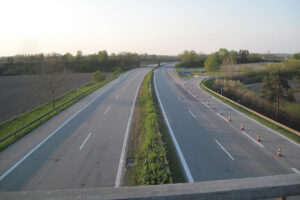Claes Oldenburg, who turned the everyday into art, 93

CLOTHESPIN (1976) by Claes Oldenburg — CLAES OLDENBURG /WIKIART.ORG
SWEDISH-born artist Claes Oldenburg, who turned everyday objects such as a clothespin, a baseball bat, or a flashlight into giant sculptures of public art in the United States and around the world, died on Monday at age 93, the Paula Cooper Gallery said.
Mr. Oldenburg came to prominence in New York City in the 1950s, forming part of the pop art movement that elevated the ordinary, and later worked in collaboration with his wife, Coosje van Bruggen, who died in 2009 at age 66.
“The strikingly original early work was hugely influential on many artists, who were informed by his freedom of thought and radical mode of expression,” Ms. Cooper, who worked with Oldenburg since the 1960s and whose Manhattan gallery represented him, said in a statement mourning his death.
“It was thrilling to work with Claes, whose odd take on things was delightful, and could completely turn one’s mood around,” she said.
Mr. Oldenburg moved to New York in 1956 and soon rose to prominence with works such as The Street in 1960. Staged at a church near Washington Square Park, it invited viewers into “an abject array of urban detritus — cardboard, tattered papers, dirtied pieces of newsprint,” according to ARTnews.
He followed up with The Store in 1961, a rented storefront that displayed small plaster sculptures of dresses, shoes, and desserts.
He met Van Bruggen in 1970 and began a “lifelong artistic partnership,” the Cooper Gallery said. Together they planned and installed the works that became Mr. Oldenburg’s trademark: monumentally scaled sculptures of ordinary items.
Among his best-known pieces is Clothespin in Philadelphia’s Center Square Plaza, a 45-foot (13.7-meter) tall steel clothespin installed during the US bicentennial year of 1976.
In Chicago, the 96-foot (29-meter) Batcolumn of 1977 depicts a baseball bat. In Las Vegas, Flashlight rises 38 feet (11.7 meters) high.
Other works of public art stand in Germany, Japan, Norway, South Korea, Italy, Britain, Spain, France, the Netherlands and cities across the United States, according to the Oldenburg/van Bruggen website. — Reuters




